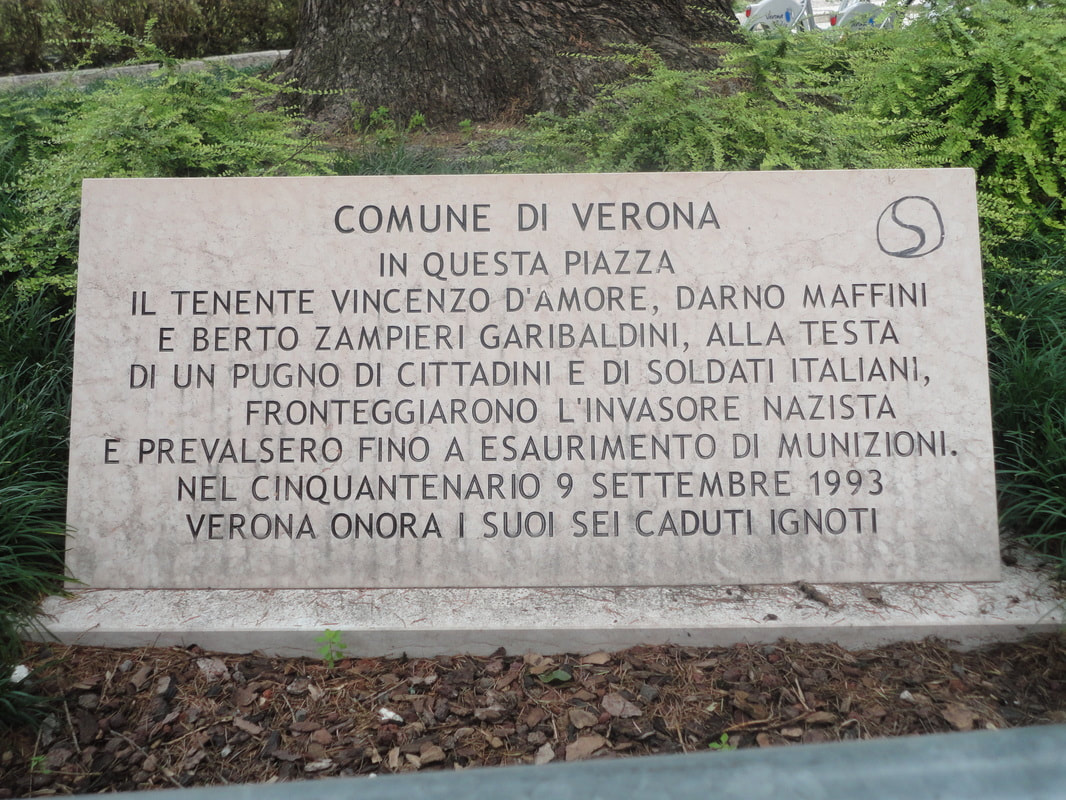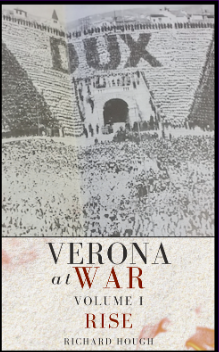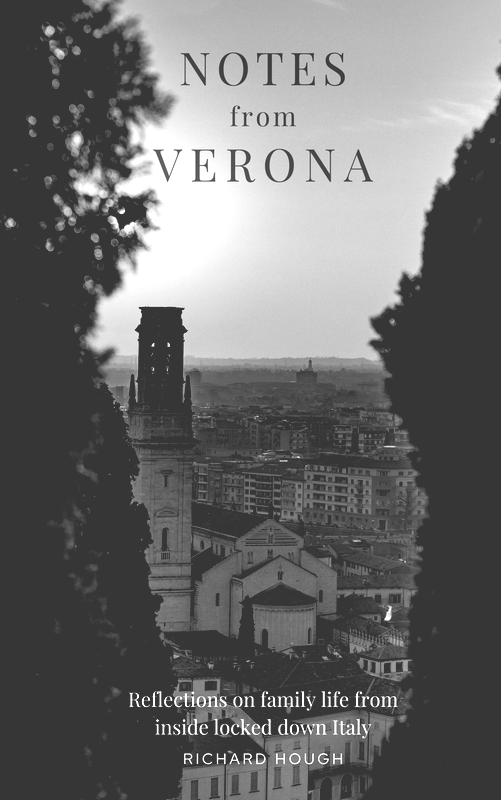|
A hero's welcome
On 26 September 1938, Benito Mussolini swept into Verona. To say that he received a hero's welcome doesn't quite capture the incredible scenes on the streets of Verona that day. Some 200,000 adoring followers flocked to Piazza Bra to hear him speak (see pictures above and below). Despite his omnipotence, the story of the rise (and fall) of Italian dictator Benito Mussolini remains an enigma to many outside the peninsula. While most are aware (in fairly general terms) of the crucial role he played as a central belligerent in the Second World War, few know much about the dictator's origins and rise to power. In fact, I'm often asked by curious visitors to explain a bit more about who he was and where he came from. This article attempts to shed some light on this dark period of Italian history.
The young Mussolini
Benito Amilcare Andrea Mussolini was born on 29 July 1883 in the small town of Dovia di Predappio, in the province of Forlì in Romagna. His father Alessandro Mussolini was a blacksmith and committed socialist. His mother Rosa was a devoutly Catholic schoolteacher. Benito qualified as an elementary schoolmaster, but his destiny lay elsewhere....
Mussolini in exile
In 1902, in order to avoid military service, Mussolini emigrated to Switzerland. During this period of exile he studied the ideas of the philosopher Friedrich Nietzsche, the sociologist Vilfredo Pareto, and the trade unionist Georges Sorel. For Mussolini this was a period of increasing political activism. He was particularly opposed to "decadent" liberal democracy and capitalism, and supported the use of violence and direct action to achieve political outcomes. He became active in the Italian socialist movement in Switzerland and was arrested on a number of occasions. Mussolini the soldier In 1904, taking advantage of an amnesty for desertion (of which he was convicted in absentia), the 22-year-old Mussolini returned to Italy. As a condition of his pardon, Mussolini joined the corps of the Bersaglieri, a distinguished corps of the Italian army. After two years of military service (including a spell in Verona at the military barracks at Castelvecchio and San Zeno), he returned to teaching but, in February 1909, he again left Italy, this time to take the job as the secretary of the labor party in the Italian-speaking city of Trento (then part of Austria-Hungary). He was also employed by the local Socialist Party, and edited its newspaper L'Avvenire del Lavoratore. He soon becomes one of Italy's most prominent socialists and editor of the Socialist Party newspaper Avanti! Under his leadership, its circulation quickly rises from 20,000 to 100,000. But, as war breaks out in Europe, Mussolini finds himself in disagreement with his party's position of non-intervention. For his pro-war stance, he is expelled from the socialist party. Mussolini the nationalist He now makes a remarkable political transformation, ending his support for class conflict and supporting revolutionary nationalism. In October 1914 he established the interventionist newspaper Il Popolo d'Italia and a new political movement, the Fasci Rivoluzionari d'Azione Internazionalista (the Fascisti), is born. On 5 December 1914, he was the headline speaker at the Gran Guardia in Verona. His discourse on the need for Italy to intervene in the European conflict marks his dramatic transition from socialism to national socialism. War comes and Mussolini spends about nine months on the front-line. He contracts paratyphoid fever and is accidentally wounded by the explosion of a mortar bomb in his trench, leaving him with at least 40 shards of metal in his body. But the War has consequences far beyond Mussolini's physical injuries. Italy's treatment after the First World War create the economic and political circumstances that allow fascism to flourish. In particular, although Italy was given Trieste, Istria and the South Tyrol (under the terms of the Treaty of Saint Germain, September 1919), Italian nationalists felt cheated. The war also emphasised the weakness of the Italian economy (between 1914-18 prices rose by 250%). The result was a wave of strikes, lawlessness and violence. Into this powder-keg steps Mussolini. The march of Fascism On 23 March 1919 Mussolini founded a new movement, the Fascia di Combattimento. By 1921, membership of the Fascist Party had risen to 152,000, including the infamous Blackshirts. Facsist violence increased and they seized control of many country districts and municipal councils. Many of those who flocked to the fascist party were motivated by economic self-interest rather than political or ideological considerations. Despite their propensity for violence, the Fascists were able to present themselves as the best guarantor of law and order, whilst the socialists were portrayed as a threat to public order. In May 1921, 37 fascists were elected to parliament, among them Mussolini. In October 1922, King Victor Emmanuel, under pressure from fascist-sympathisers from within the Royal Family, invited Mussolini to form a government. Despite some misgivings, Mussolini was seen by many as the only alternative to social revolution. In January 1925 other independent parties were prohibited, communists were imprisoned and press censorship was enforced. The dictatorship had begun. Mussolini would remain in power for the next 20 years. More stories from Verona at War... |
AboutRichard Hough writes about history, football, wine, whisky, culture + travel and is currently working on a trilogy about wartime Verona.
|








